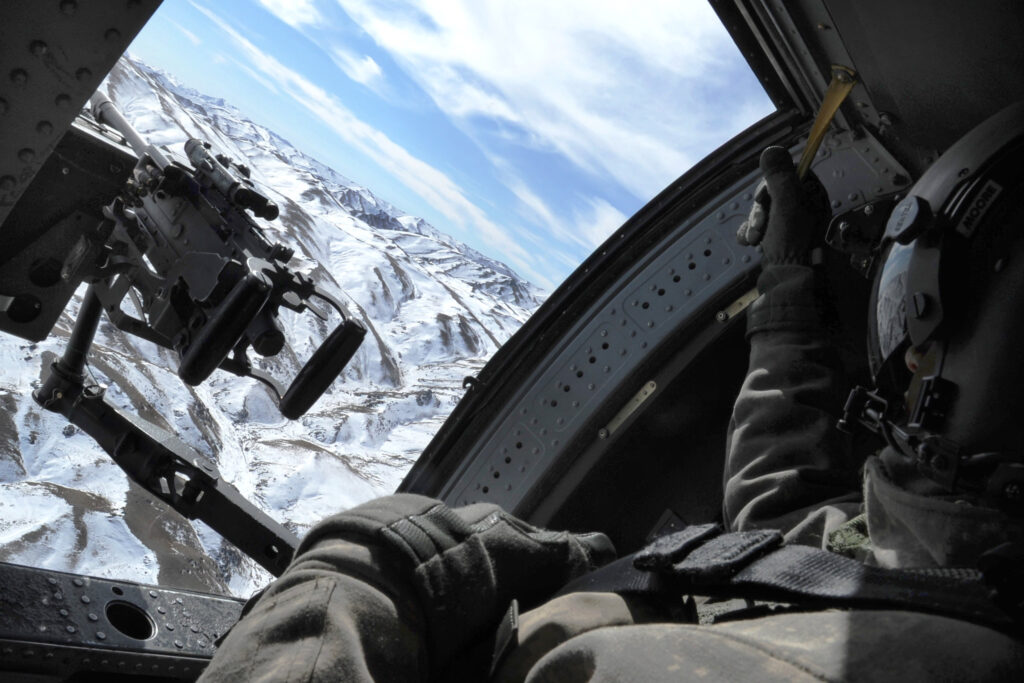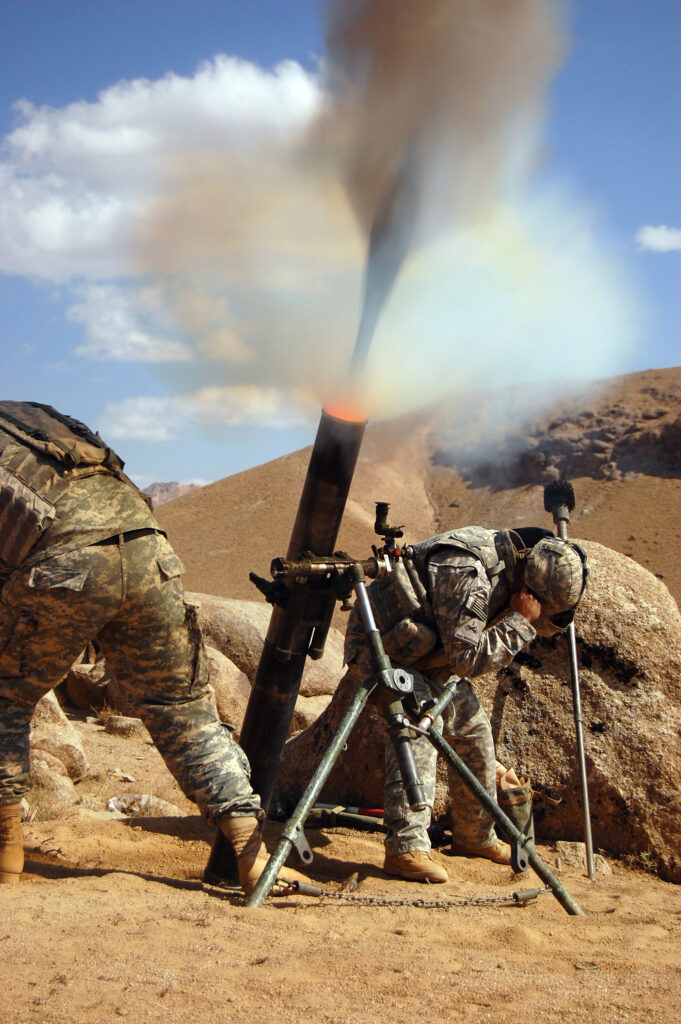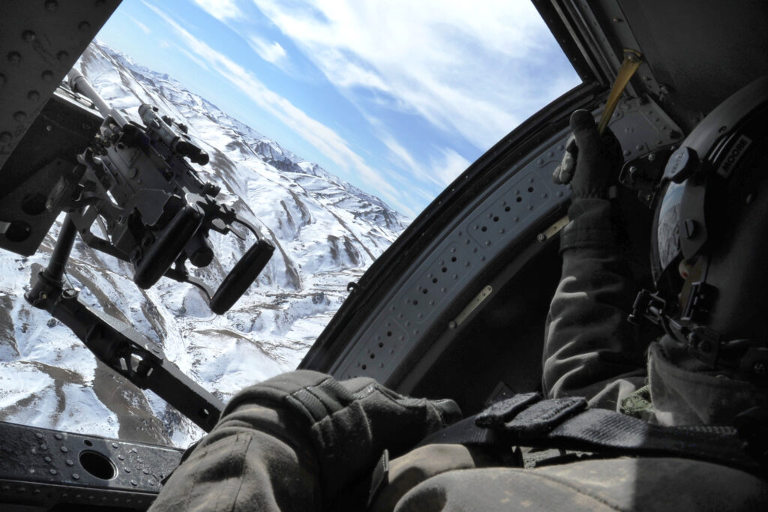I, like most Americans, have read about and watched the horrific scenes coming from Afghanistan as the United States continues its withdrawal. And I have listened to many pundits reflecting—with the full benefit of hindsight—on how it could have been done differently. This is not an essay exploring whether the withdrawal was right or wrong, necessary or not—I am not versed enough in this conflict to answer that. Instead I’d like to use this withdrawal as a foil to one of the many fronts in the climate war we’re waging (if you’ll forgive the militarized metaphor)—specifically geoengineering.
Ultimately, the question became: does the US withdraw or does it stay, continuing to spend 0.5 percent of its annual budget to maintain its presence—and stability—in Afghanistan (at least until the Taliban ratchets up its attack and at that point force the US to either withdraw or commit more resources)? The US chose to withdraw—hoping that the Afghan government forces would be better prepared to sustain the fight on their own (at least for a few months while the withdrawal proceeded)—but for whatever reason: corruption, effective infiltration of those forces by the Taliban, or sheer will of the Taliban, the government forces fell quickly, bringing us to the current newsworthy mess.

This essay doesn’t even attempt to address all the ecological (including climate) costs in sustaining an endless high-tech war. But the environmental costs of war are truly staggering, which you can read more about here. (Photo from U.S. Army via flickr.)
But what’s that got to do with geoengineering?
As I noted in a recent reflection, the latest IPCC report states clearly that global temperatures would be about 0.7 degrees Celsius warmer right now if it weren’t for all the pollution in the air keeping the world cooler. Technocentric “environmentalists” and special interests who could profit from geoengineering interventions discuss geoengineering as a possible bridge to help with the energy transition in the short-term, but it turns out we’ve already been geoengineering (at least inadvertently) since the start of the industrial revolution.1
I’ve always been against geoengineering: the idea of spending money to deliberately send pollution up into the atmosphere (instead of treating the problem),2 which will mask the effects of climate change (most likely enabling us to pass the buck even longer), and which will lead to the continued acidification of the oceans (as geoengineering does nothing to reduce CO2 emissions even if it stabilizes temperatures) sounds like a lose, lose, lose to me.3
But I didn’t realize that we’ve already been geoengineering—just not intentionally or systemically.4 Grasping that, let’s assume that we actually succeed in a Paris-style transition to a renewable energy future and miraculously stabilize temperatures at a 2-degree Celsius average global increase. At that point, we’d be closer to 3 degrees.
Does that mean we’d need to geoengineer on purpose at that point to simply make up for lost cooling pollution? Or do we risk grave outcomes from our pollution pullout? Jumping from 2 to 3 degrees over a relatively short period of time could trigger extreme droughts, storms, and famines, and worse could push fragile and already taxed systems into irreversible shifts. Already, the ice sheets of Greenland are melting rapidly, and are probably unsavable, but how quickly they are lost will mean a world of difference to coastal peoples and to the stability of nation-states—as environmental refugees flee the coasts to other cities or other countries. (Note the eerie parallels with the melting away of the Afghan government forces—if they had failed more slowly the chaos could have been managed to a far better degree.)

Endless climate conflicts in the future, with all their pollution, might play a cooling effect as well (along with their global warming, society-disrupting, and ecosystem-destroying effects). (Photo from U.S. Army via flickr.)
Are we locked in a war where we have to keep sending materiel into the theatre of conflict (in this case the atmosphere) just to prevent the worst outcomes?5 For how long do we do that? Arguably—if we were working toward a rational climate solution—the answer might be as long as it takes to sequester enough CO2 to get us back to a certain atmospheric concentration (whatever that safe level is: 350ppm? 300ppm?). But that could take a century. And this isn’t proactive geoengineering we’re talking about—to buy us time—but just to hold the enemy at bay, an enemy that has advanced far more than we realized.
Now to the point
So what’s the point of this somewhat callous and overly militaristic comparison? First and foremost, the idea that geoengineering is an option to help buy us time is bunk. We’re already geoengineering (even if in ignorance)—and have been since the beginning of the industrial/climate-change era. So other than painting rooftops white6 and other no-harm, low-cost geoengineering efforts, we should stop seeing this as even a partial solution (or more accurately, a time-buyer, as geoengineering is not a solution at all).7
Second, it means we can’t simply ban geoengineering, for in the case of a successful transition (as remote as that possibility is), we may need to rely on it if/as our pollution reduction efforts succeed. As Stuart Brand noted, “we are as gods and might as well get good at it.” While the hubris embedded in that statement draws a bit of vomit into my mouth every time I hear it, after playing god for the past two hundred years, it is true: we humans should invest in understanding what we’ve been doing so that ideally we can do it in a way that minimizes unexpected consequences, unwilling sacrifices by people not part of the decision-making process, and unnecessary expenses that could go toward the positive transition.
Ultimately, we need to grapple quickly and decisively with the deeper root causes of climate change: pursuing an agenda of economic degrowth, reining in consumerism, and working toward stabilizing the human population at around 2-3 billion. We should have taken that tack in Afghanistan too, working to instill a culture of equity, culturally-appropriate governance, and sustainability. But just as we didn’t do that in Afghanistan, we’ll probably not make the bold cultural, economic, and political changes needed worldwide. Thus, considering our transition will probably be “Earth-managed” (and thus far more disorderly than we’d prefer) we should at least be working to cultivate the political will, resource reserves, and know-how to enable a slower, more strategic withdrawal (i.e. a phasing out of our sustained but unintentional geoengineering interventions to prevent sudden and dramatic climate shifts). Of course, all this may be moot, as people burn street trees, furniture, and plastic waste to cook and keep warm if things get really bad (continuing to geoengineer in the process), but we should ensure some means to control the withdrawal of cooling gases, rather than being swept away in a sudden, deadly pullout.
 If only the US had bombarded Afghanistan with teachers, doctors, permaculturalists, and proponents of a sustainable and just society (rather than a techno-consumer society) perhaps the results would have been different. (Photo from U.S. Army via flickr.)
If only the US had bombarded Afghanistan with teachers, doctors, permaculturalists, and proponents of a sustainable and just society (rather than a techno-consumer society) perhaps the results would have been different. (Photo from U.S. Army via flickr.)
Endnotes
1) An interesting article on Medium suggested that the 1930s had intense heating (and subsequent dustbowls and famines around the world) because the Great Depression (starting in 1929) meant a lot fewer emissions in those years. I cannot confirm that is the reason (though the data is credible, coming from the EPA) but it is a fascinating hypothesis and worthy of deeper exploration. If accurate, it could be that the Dust Bowl, droughts, and famines in the 1930s were sparked or at least exacerbated by this inadvertent pause of geoengineering (indirectly shaping La Niña climate cycles, for example). A frightening possibility. Indeed, NASA found that the worst drought in one thousand years occurred in 1934, five years into the Great Depression. Another major drought happened in 2012, four years after the 2008 recession. (Assuming these were influenced by sustained reductions in our geoengineering efforts, it is unclear whether there will be ramifications from the COVID-recession, particularly considering the forest fires that have blazed these past two years, which may have offset the small drops in greenhouse gas emissions and their cooling effects, though while also countering our brief emissions respite as trees transform into CO2.)
2) Or even better, the root causes of the problem: consumer culture, overpopulation, growth-obsession, as opposed to what is often defined as the problem: fossil fuel energy, meat production, inefficient production, etc.
3) Especially as there are hidden costs, and the specific effects are hard predict, and because the sacrifices from geoengineering can be borne by those who didn’t choose this (people being sacrificed rather than choosing to sacrifice). For more on this, read this excellent article by Simon Nicholson for State of the World 2013.
4) This is a good moment to make it clear that there is another difference between the intentional geoengineering being considered and what we currently do. The former would inject sulphur dioxide into the upper atmosphere, where it would remain for up to 18 months, while the latter injects it into the lower atmosphere, where it stays for days or weeks. Yes, a bigger potential gain if we inject high into the sky, and a bigger potential disruption if we misjudge its effects.
5) More complications: the polluting particles help briefly while in the air, but eventually they land, and that darkens ice and leads to more warming—similar to supplying the Afghan government troops with weapons only to have them end up in the hands of the Taliban.
6) Which at best will offset the darkening ocean as reflective ice melts in the Arctic and is replaced with darker (light-absorbing) open water.
7) To really belabor this metaphor, intentionally geoengineering more would be like a troop surge in Afghanistan: it sounds like a good idea on paper but the unintended consequences, the collateral damage, and the resource costs make its value questionable.

No witty caption for this image. But oh how the donkeys contrast with this heavily armed Humvee. (Photo by U.S. Army via flickr.)





